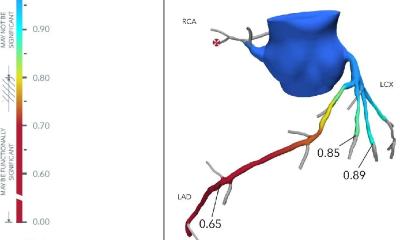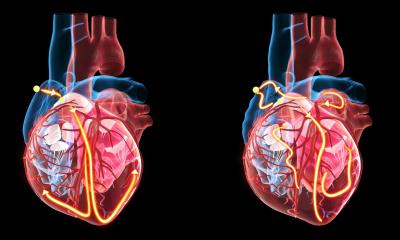Cardiovascular disease
Sorry statistics from Europe and developing world. EU heart health policy is now a priority
Europe - Every year, 4 million people die from cardiovascular disease (CVD) in Europe as a whole (as many as 800,000 of them under 65 years old) and, in the EU Member States, over 1.5 million people die annually from CVD.

Many of those deaths were caused by unhealthy lifestyles so could have been avoided, says The European Heart Network, based in Brussels.
EHN also points out:
• CVD is the main cause of death in women in all countries of Europe and is the main cause of death in men in all countries except France.
• CVD is the main cause of years of life lost in early death in Europe and the EU.
• Nearly 30% of years of life lost in Europe are due to CVD (over 30% in the EU).
• CVD mortality, incidence and case fatality are falling in most Northern, Southern and Western European countries but rising in Central and Eastern European countries.
• Each year smoking kills about 1.2 million people in Europe (430,000 from CVD) and about 500,000 people in the EU (130,000 from CVD).
• Smoking has declined in many European countries but that rate is now slowing. Women now smoke almost as much as men in many European countries and girls often smoke more than boys.
• Diets are generally improving in Northern and Western European countries but deteriorating in Southern, Central and Eastern European countries.
• Dietary patterns across Europe - once very different - are now converging.
• Levels of obesity are increasing across Europe.
• The prevalence of diabetes is increasing across Europe.
Economic Costs - Coronary heart disease is not only the single most common cause of death in the UK, for example, but it also imposes a huge annual burden on its economy. The costs of healthcare alone are over £1.7 billion a year. However, the majority of the costs of CVD fall outside the healthcare system and are due to illness and death in those of working age and the economic effects of their families and friends who care for them.
Prioritising EU heart health
The Council of Ministers of the European Union (EU) recently acknowledged not only that cardiovascular disease in Europe is ‘the largest cause of death of men and women in the European Union’ - and is too frequently caused by unhealthy lifestyles - but that these risk factors must be addressed in the development of national and European policy. Professor John Martin, Chairperson of the European Society of Cardiology (ESC) Committee for EU Relations, pointed out that national governments and the medical profession have been working together to bring about an advance, and that the EU move is a ‘great step forward for European healthcare’
The EU declaration is a direct consequence of the recent initiatives on cardiovascular health staged by the Irish Department of Health and Children and the ESC involvement in these, including ‘Promoting Heart Health - A European Consensus’ (Feb 2004) and the meeting on Cardiology Audit and Registration Data Standards (CARDS) this May.
Professor Martin said the relationship between the ESC and the Irish Department of Health and Children during the Irish Presidency of the EU ‘... may act as a model for other medical societies in Europe to identify similar problems and advise governments accordingly’.
The developing world: Soaring CVD hits the young
In developing countries, heart disease and stroke are causing hundreds of thousands of deaths in young people of productive age, according to a report entitled A Race Against Time, released in April by Columbia University’s Earth Institute. The research, supported by the Initiative for Cardiovascular Health Research in Developing Countries and the Australian Health Policy Institute, University of Sydney, focused on Brazil, South Africa, Tatarstan, India and China.
Population estimates for the five countries were combined with current death rates and workforce data to calculate the future effects of CVD both on society and on the workforce.
In India, South Africa and Brazil, the researchers found that among working age people mortality rates for cardiovascular disease (CVD) are almost twice those in the more affluent USA. In India, for example, five million people die of CVD each year, and 28% of those people were under 65 years old. In the Russian Republic of Tatarstan, CVD death rates for young men have increased in just 20 years by 70% - increased risk factors there include poor diet, smoking, high blood pressure and more sedentary lifestyles.
CVD, the report also points out, is often unrecognised as a cause of impaired health among women, yet, in South Africa, despite HIV/AIDS topping mortality figures, CVD ranks sixth in men’s diseases, but a third in women’s diseases, and most heavily affects poor women, causing the highest portion of life years lost due to non-communicable diseases (46%). The proportion of deaths occurring among 35 to 44-year-olds due to chronic disease (mainly CVD) is 12% for men and 17.2% for women.
Australian epidemiologist and Earth Institute Visiting Professor Stephen Leeder, a former dean of the University of Sydney Medical School who led the research team, pointed out that treatment is often unavailable in these countries and lifestyle programmes such as diet/exercise awareness and anti-smoking campaigns, as well as tobacco taxes that have impacted in the US over the past 40 years, have not yet occurred in the countries surveyed.
01.07.2004









